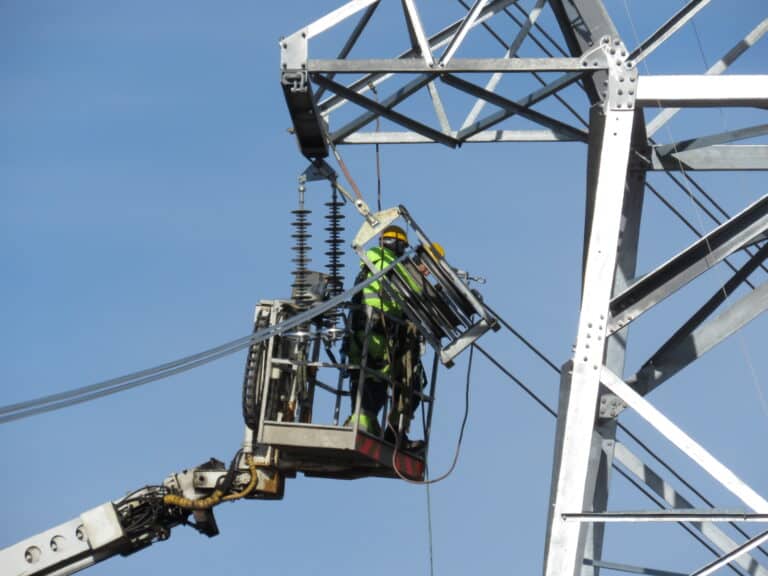1. Mitä asiaa erityisesti seuraatte sähkömarkkinoiden kehittymisessä tällä hetkellä?
2. Mikä on näkemyksenne pohjoismaisesta tasehallintahankkeesta, mm. siirtymisestä varttitaseeseen?
Asiantuntija Petteri Haveri, Energiateollisuus, Energiamarkkinat

1. Seuraamme kattavasti eurooppalaisen energiapolitiikan suuria linjoja, keskitytäänkö ilmastonmuutoksen hillintään ja vähentämään päästöjä vai aletaanko käyttää julkista rahaa markkinaehtoisestikin toteutuvien investointien toteuttamiseen.
Markkinaehtoisuutta tarvitaan. Suomessa ja Euroopassa sähköntuotannossa päästöttömän ja säädettävyydeltään rajallisen kapasiteetin määrä ja osuus ovat kasvaneet ja kasvavat edelleen. Kun tuotantopuoli muuttuu jäykemmäksi, sähkönkäytön ja erilaisten uusien käyttökohteiden markkinoille osallistumisen ja hintoihin reagoinnin merkitys kasvaa. Sekä yksittäisten asiakkaiden että koko markkinan kannalta.
2. Säätö- ja tasesähkön hinnanmuodostuksen vaihtuminen tuntitasolta varttitasolle ei ole muutoksena valtava, mutta sähkönmittauksen muuttaminen tuntiperusteisesta varttiin on erittäin suuri työ. Suomessa on tehty hyvä taustatyö varttitaseeseen siirtymisen mahdollistamiseksi, ja mittarointi tullaan muuttamaan varttiin mahdollisimman kustannustehokkaasti aloittaen energiamääräisesti merkittävimmistä käyttöpaikoista. Ja tämä työ on jo yhtiöissä alkanut.
Pohjoismaista tasehallinta-kokonaisuutta yleensä vaivaa tarpeettoman verkkotekninen lähestymistapa, ja luotto markkinoiden voimaan mahdollistaa luotettava sähkönsiirto hintasignaalien avulla saisi olla vahvempi. Toimivat sähkömarkkinat ovat kantaverkkoyhtiön ystävä, ja kaupankäynnin esteitä tulee ennemmin purkaa kuin lisätä. Sääriippuvaisempi sähköjärjestelmä edellyttää mahdollisuutta käydä kauppaa aina toimitustunnin / -vartin alkuun asti, ja mahdollisuutta reagoida järjestelmän tarpeisiin vielä toimitusjaksolla.
Hankekehityspäällikkö Marja Kaitaniemi, Neoen Renewables Finland Oy

1. Sähkön hinta ja pitkän aikavälin hintakehitys ovat erityisesti seurannan kohteena. Kun lähes kaikki tuulivoiman liittäminen on nykyään PPA-lähtöistä (eli pitkiä sähkönhankintasopimuksia), seuraamme tarkasti PPA-sopimusten pidemmän aikavälin hintojen kehitystä, eli minkälaista hintaa niistä saa.
Sähköverkkoon liittyminen ja liittymisen kustannukset ovat myös seurannassa. Suomessa Fingridin kanssa tämä toimii hyvin, muualla maailmassa kaikilla alueilla ei niinkään. On tärkeää päästä keskustelemaan jo hankesuunnitteluvaiheessa, mille alueille verkkoliitynnän kannalta on suotuisaa rakentaa uutta tuulivoimaa.
2. Varttitaseeseen siirtyminen näkyy meillä varmasti. Tuotantoa on pystyttävä tarkasti ennustamaan, mikä tuo tuulivoimatoimijalle haasteita. Kokonaisuuden kannalta kyseessä on oikeudenmukainen ja fiksu linjanveto. Ymmärrämme sen ja sopeudumme parhaamme mukaan.
Tasehallintasopimukset tehdään pitkille aikaväleille, ja tiedämme, että tasehallinnan kustannukset tulevat nousemaan. Teemme aktiivisesti ennakointia, sillä kustannusten nousuun vaikuttavat myös muut tekijät. Toisaalta tuulivoiman tuotantokustannukset laskevat, kun teknologia kehittyy. Arvioimme, että tasehallinnan tuoma kustannusmuutos ei kuitenkaan vaikuta investointeihin.
Toimitusjohtaja Pasi Kuokkanen, Suomen sähkönkäyttäjät ry, ELFI

1. Olemme suurten sähkönkäyttäjien edunvalvoja ja jäsenistöstämme suurin osa on mukana kysyntäjoustomarkkinoilla. Sähkömarkkinoiden toimivuus on meille keskeinen seurattava asia, sillä hinta on aina seurausta markkinan toimivuudesta.
Akuutisti ELFIä puhuttaa sähkönhankintaan olennaisesti liittyvä hintasuojaus. EPAD-aluehintaerotuote ei ole riittävästi suojannut sähkön hintaa, sillä tuotetta ei ole aidosti kehitetty. Pohjoismainen systeemihinta on eriytynyt liiaksi realistisesta hintatasosta, ja se on suomalaisille sähkön käyttäjille haitallista. Kilpailu finanssipörssien välillä pitäisi asian kunnossa.
2. ELFI on ollut mukana kommentoimassa tasehallintahanketta sekä EU:ssa, Pohjoismaissa että Suomessa. Kokonaisuudessa on vielä paljon kehittämisen varaa ja runsaasti kysymysmerkkejä.
Kun Pohjoismaat integroituvat tiiviimmin Euroopan sähkömarkkinoille, markkinarakenteet myös Suomessa muuttuvat. Aina suunnittelua ei tehdä parhaan mallin tai lainsäädännön perusteella, vaan vaikuttavana tekijänä on esimerkiksi markkinan koko. Pohjoismaat ovat kokonaisuutena aika pieni kuluttajakokonaisuus Euroopassa. Mennäänkö siis ketterimmän ehdoilla, vaiko EU-arvomaailman ehdoilla vaiko hitaimman mukaan?
Pohjoismaat ovat olleet edelläkävijöinä sähkömarkkinoiden toimivuudessa. Keskustelu on ollut hyvin avointa, ja siinä Fingridillä on ollut iso rooli. Yhä useammin käy niin, että joudumme ottamaan annettuna eurooppalaisia malleja käyttöön. Olemme liittymässä yhteiseurooppalaisiin markkina-alustoihin, Mariin ja Picassoon. On yhteismarkkinahengen vastaista, jos menemme niihin mukaan viiveellä. Viive ei myöskään palvele ostajan intressejä.
On mahdollista, että jatkossa sähkömarkkinasta tulee hankalammin hahmotettava. Jos kahdenväliset sopimukset lisääntyvät, katoaa markkinoilta läpinäkyvyyttä ja likviditeettiä. Tunnista varttiin siirtyminen vaatii ostajalta aikaisempaa enemmän työtä. Tähän tarvitaan lisäresursseja, ja se kasvattaa sähkön hankinnan kustannuksia. Muutoksen yhteydessä ostaja myös miettii, kenen kanssa kannattaa uudessa tilanteessa tehdä yhteistyötä. Kilpailutilanne elää ja markkinaosuudet muuttuvat, mutta toimiiko markkina tehokkaammin ostajan kannalta?
Energiajohtaja Esa Ukkonen, Stora Enso

1. Sähköjärjestelmän toimitusvarmuus sekä hinnaltaan kilpailukykyinen kantaverkkopalvelu turvaavat osaltaan energiaintensiivisen vientiyrityksen kilpailukykyä sekä nyt että tulevaisuudessa. Sen, miten nämä edellä mainitut tekijät pystytään turvaamaan yhdessä muun muassa kansallisten sekä EU:n ilmastotavoitteiden, energian sektori-integraation sekä lisääntyvän uusiutuvan sähköntuotantokapasiteetin myötä, tulee olla myös jatkossa Fingridin toiminnan fokuksessa.
2. Varttitaseeseen siirtyminen on kiistämättä sähkömarkkinoiden kehityspolku, jonka sään mukaan vaihteleva uusiutuva sähköntuotantokapasiteetti tuo tullessaan sähköjärjestelmään. Meille se tarkoittaa, että nykyistä lyhyempi taseselvitysjakso edellyttää meiltä vielä entistäkin aktiivisempaa sähkötaseiden ennustamista sekä tasehallintatoimenpiteitä. Toisaalta tämä voi avata meille markkinatoimijana myös uusia mahdollisuuksia esimerkiksi digitalisaation kautta.







